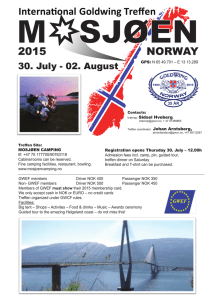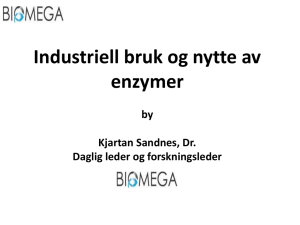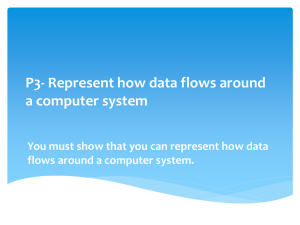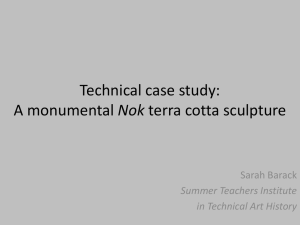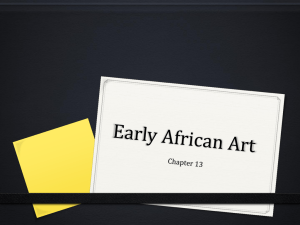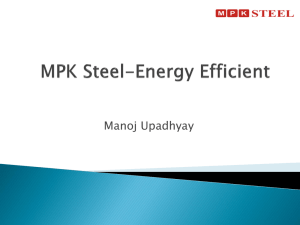business prospect
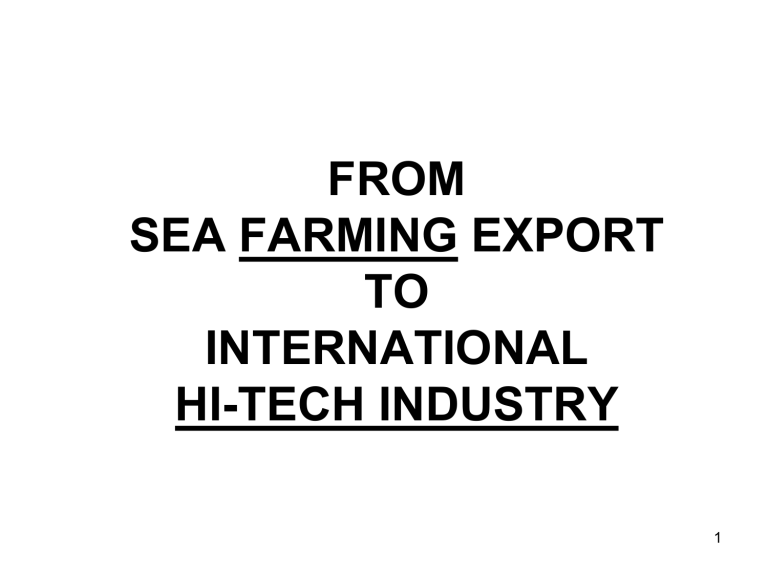
FROM
SEA FARMING EXPORT
TO
INTERNATIONAL
HI-TECH INDUSTRY
1
SINOR’s PROJECT IN
SHAPING
1. One vertically integrated production unit
2. 10.000 t of yearly production
3. Norwegian Atlantic Salmon
4. Processing and total distribution logistics
SINOR BACKGROUND
• Sinor has 22 years of experience of assisting
European companies into the Chinese market
• Sinor has decided to concentrate from 2009 on establishing and managing companies in the seafood marked in China, based on Norwegian skills and state of the art technology
• Sinor has established crucial relationships with necessary official bodies in the Chinese seafood sector
• Sinor has established strategically alliances with
Norwegian suppliers in the whole seafood chain
3
FASE 1:
A STRATEGIC PLAN for
DEVELOPMENT OF THE CHINEESE LAND BASED
AQUA CULTURE INDUSTRY based on extensive
SCANDINAVIAN RAS TECHNOLOGY,
OPERATIONAL MANAGEMENT & INDUSTRIAL
COMPETANCE and deep
CHINEES CULTURAL, STRUCTUAL & MARKET
KNOW-HOW
4
2010 FACTS and FIGURES
• 2010 aqua culture production is 43 mill. ton at value of 63 bill. US $
• China is no 1 in production with 20 mill. ton (almost 50% of total world production), but low sales value.
– China goal 2020: 40 mill ton – same as world production 2010 !!
• Norway has an annual production of 3 mill. ton out of which salmon represent 1.3 mill. tons, but high sales value.
• Aqua culture annual growth rate is 10 % which is double of
Norwegian present production,
• Sinor has delivered the world largest recirculation plant (RAS) to China in 2010 with capacity of 1000 tons annually.
5
2012 BACKGROUND
• Development of world production of seafood divided into catch and farming:
– Catch volume leveling off
– Farming significant growth, and outperform catch within few years
• Growing demands for sea food world wide and in China
• RAS (recirculation plant) technology now available in full scale.
• Feed technology and efficiency becomes green; will boost further growth in industry.
• DNA and other fast growth and resistibility parameters continue to improve.
6
BEFORE 2025: WORLD
POPULATION 10 BILLION
• Depending on certain assumptions about affluence, diet composition and food waste, the calculations imply an increase in total food production of 70% on current production level during the same period.
• The majority of this population will be urbanized.
• A significant part of the 70% must come from seafood.
7
8
2020: FARMING IN DRIVERS SEAT
2030: RAS PLANTS DOMINATING
100
90
80
70
60
50
40
30
20
10
0
1970 1980 1990 2000 2010E 2020E
IN 1000
TONS
(app. fig!) farming catch
9
YEARLY CONSUMPTION OF
SALMON
8
7
6
5
4
3
2 kg/person
1
0
China USA France Norway
What if one third of China ’ s population approaches 1 kg/person ?
10
THE PROSPECT OF THE
BLUE ECONOMY
• Sea-caught fisheries will seek to maintain present levels of production.
• Aquaculture production will continue its ongoing trend to provide a larger proportion of total fish production.
• Total fish consumption per head will increase for health and demand reasons.
• The limitation in sea water locations due to both environmental and legislative reasons, will support and move the sea food farming from the sea to land based locations.
• Availability of water resources provides opportunities for R.A.S. independent of other parameters (R.A.S. cleans water, thus preventing diseases by providing a closed system that can be monitored in detail).
11
OPPORTUNETIES CHINA
• Chinese potential value improvement/cost reduction by domestic production: 60 %
• Landed price in China of Norwegian/UK/Chile air borne farmed salmon is more than 2.5 times production cost in
Norway. (Import value (cost) for salmon products due to tolls, taxes and airway transportation of fish on ice)
• CO2 issue critical
• Cold shoulder policy from official China. Production in
China can solve the problem
• UK/Chile has taken over leading import market position
12
BASIC BUSINESS IDEA
Broad Norwegian competence after
40 years of tries and fails, improvements and development
1970 – 2010
- Breeding
- Farming
- Pharmacology
- Technology
- Biology
- Operational
2012
•Strong Norwegian market share, technology and skills,
•Next phase; from export to internationalization
•Significantly improved Chinese skills and competence
•Chinese high demands and marked growth
2020
2012
•Chinese production planning for high value increase
•Present Chinese competence to be improved
13
CHINEESE SEA FOOD
DEMANDS
• Market potentials are big. China goal 2020: 40 mill ton – same as world production 2010 !!
• Product development needed
• High volume of fresh water farming necessary
• Need for improvements in present installations, feeds and breeding methodology
• Operational skills improvements
• Lacking functioning RAS technology,
• Local capital available
• Foreign capital triggers multiple funding
• RAS - Move from farming to advanced industry
• We have well established relationships with necessary official bodies
14
BUSINESS CASE
• Establish a 10.000 MT per year Salmon/Trout production unit in Coastel City.
• Local government is facilitating.
• Production DESIGN – based on latest RAS technology.
• Surround the production unit with service providers to RAS production by offering preferential policies.
• Develop new product segments and distribution network.
15
PURPOSE, GOALS AND SCOPE
• The purpose is to invite Scandinavian capital to invest in local RAS production in China.
• Sinor thru newco NORSI:
– The goal is to play a significant role in the development of industrial RAS based seafood market in China
• First investment will be a salmon RAS factory in a Chinese province where all licenses will be provided.
• Licenses will be released when a 500 mill project introduces and approves in Qingdao.
16
INITIATORS
• SINOR AS: Morten Tangen, Xiao Ying
Gao
• WIROJA AS: Willy Roger Jacobsen
• KABI AS: Asbjørn Birkeland
17
BASIC MODEL
INVESTORS
Founders and Initiators: SINOR,……………..,
NORSI AS
ADVISORS AND INVESTMENT BANKING
STRATEGIC ALLIENCES
NORASI AS
Production Company A
CO-INVESTORS / JV
Production and Sales Company B
CO- INVESTORS /JV
18
IMPLEMENTATION
• Localisation Licence – OK by local government
• Local company with acquired land & water licence & certificates – local company initiated with registered capital of RMB 10 mill. Land & water identified and reserved at a value of RMB 20 mill. Sinor will indirectly hold the shares of local company.
• Foreign investment NOK 500 mill – will trigger local borrowing at least 3 times the investment.
• Total investment case estimated to NOK 500
19
COST OF PLANT
• RAS production plant depends on cleaning technology :
– What type of recirculation is required, i.e. how many m3 of used water is exchanged with fresh water per time unit.
– the Feed Conversion Rate (Efficiency: Feed/Biomass)
– It is assumed that in the planned factory, a consumption of 400 l/kg produced salmon will be sufficient.
– Total estimated cost for the 10.000 T plant including hatchery, purging , butchering and processing as well as civil work and total plant in-door: NOK 500mill.
– The investment will be accumulated over 36 months. First income/revenue starts after 6 months.
20
•
•
–
–
KEY NUMBERS 1
INVESTMENTS
Infrastructure NOK 90 mill
Plant NOK 410 mill (20% is procured locally)
–
–
•
•
•
•
•
COST ESTIMATES:
•
•
•
FIXED COST total year
Maintenance, operation: 5 mill
Manpower will build up over 36 months from 20 man/year to 35 man/year
NOK 2.0 mill to 3.5 mill
First year 2 foreigners x 1.5 mill: 3 mill
Second year onwards 1 foreigner: 2 mill
VARIABLE COST (per kilo)
Smolt NOK 1
Feed NOK 11
Power NOK 4
Other costs NOK 3
Butch/packing NOK 3
–
TOTAL VARIABLE NOK 22
21
KEY NUMBERS 2
• Production volume full capacity SALMON: 10.000 T/year
• Production volume SMOLT: 8 mill per year of which 5 mill is sold to local farmers at a price of NOK 15 per pc.
• Fixed income per year on SMOLT only: NOK 75 mill. First SMOLT can be sold 6 months after start up.
• Selling price:
– Live Salmon is generating NOK 150 per kg
– Butchered / Head on ice NOK 90 per kg
• Transport og sales costs:
Selling cost per kg NOK 1
• Distribution:
– NOK Live NOK 3,
– Butchered NOK 1
– Existing technology is mini RAS equipment mounted on trucks. Duration of transport limited to 18 hours. New technology pending increases transportation time to 50 hours.
For butchered products existing distribution system is operating.
22
KEY
(CONSERVATIVE)
NUMBERS
FULL YEARLY PRODUCTION
SALES: 10Mkg x 90 kr/kg: 900 MNOK
VAR.COST: 10Mkg x 22kr/kg: - 220 MNOK
FIXED COST x 10!:
CAPITAL COST 10%:
- 100 MNOK
- 50 MNOK
SELLING & DISTRIBUTION:
UNCERTAINTY 20 %!
EARNINGS 34 %:
- 40 MNOK
- 180 MNOK
310 MNOK
23
EXCLUSIVE COOPERATION
AGREEMENTS & PARTNERS
- * SKRETTING ASIA
- * Nofitech AS, RAS design
- Kaldnes Brûgge, RAS installations/water filter
- * Aqualine AS, lake & sea water installation.
- - Billund Aquaservice AS – world leader RAS technology
- - Aquasearch AS, Denmark – eggs for trout
- * SalmoBreed AS, eggs for Atlantic salmon
- - VEOLIA Ltd, China – water treatment and turn key solutions, pending
- -NOFIMA AS, aquatic consultants (world class)
- - AquaResearch AS, genetic consulting, owned by Nofina
24
* signed agreements.
